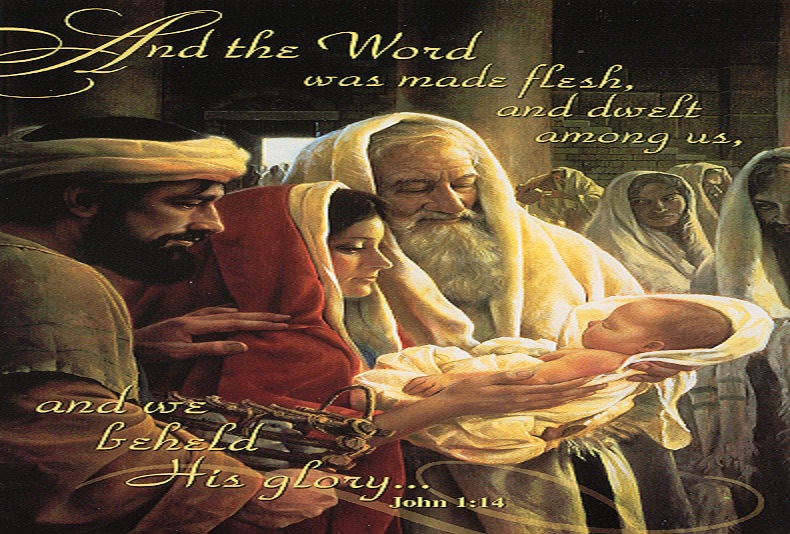
Wednesday, 4 March 2020
The book of 1 John; an Introduction.
The book of 1 John is the 62nd book of the Bible, and it is comprised of 5 chapters of 105 verses, the same number of verses as that of 1 Peter. A verse-per-day evaluation of 1 John will take just about three- and one-half months to complete.
John is the Apostle John who was personally called by Jesus. Matthew 4:21, 22 reveals his formal calling by the Lord –
“Going on from there, He saw two other brothers, James the son of Zebedee, and John his brother, in the boat with Zebedee their father, mending their nets. He called them, 22 and immediately they left the boat and their father, and followed Him.”
John is held to be the author of the Gospel of John; 1, 2, and 3 John; and the book of Revelation. He is highlighted in the gospels as being one of an inner circle who most closely associated with Jesus. This also included Peter and John’s brother, James. In the gospel which bears his name, he refers to himself as the disciple “whom Jesus loved” (for example, see John 13:23).
Based on the terminology of some verses in the gospels, it is speculated by some that John may actually be a first cousin of Jesus. However, this cannot be determined without a measure of speculation.
Like the book of Hebrews, no writer is specifically identified as being the author of 1 John. Extra-biblical writings, however, identify him as the author. These include Irenaeus, who lived approximately AD 140–203; Clement of Alexandria, who lived around AD 150–215; Tertullian who lived around AD 155–222; and Origen, who lived around 185–253. No other name is known to be assigned as the author, and so it is rather certain that he is the one.
In addition to these known early testimonies, comparing the style and content between the gospel of John and the epistle of 1 John provide us with sufficient evidence to be reasonably confident that the traditional idea of John being the author is correct. For example, the opening line of the gospel (John 1:1), and a second verse (John 1:14), match in terminology to the opening line of the epistle (1 John 1:1). From there, numerous other verses are also interestingly similar. One of the many examples would be –
“He who believes in the Son has everlasting life; and he who does not believe the Son shall not see life, but the wrath of God abides on him.” John 3:36
“He who has the Son has life; he who does not have the Son of God does not have life.” 1 John 5:12
Detailed studies have been made, highlighting these similarities, and they provide great assurance that the same person, the Apostle John, authored both books. In addition, in the opening verses of the epistle, the author of 1 John personally speaks of having witnessed the things he writes of. From there, his writings testify to the truth of that claim.
The dating of the letter is reasonably assumed to be from the mid-80s to the mid-90s. Irenaeus makes this claim, but also some of the internal content of the letter – such as refuting the idea of Gnosticism, give hints to this dating. The content of the letter also suggests that it was written about the same time, or after, the gospel of John.
No specific recipients are named – either a specific church or location, or a specific individual. Therefore, it may have been intended as an encyclical letter passed out to various churches to either accompany the Gospel of John, or to confirm the authenticity of the Gospel which had been received earlier. The careful use of the similar content would help confirm that the Gospel was, in fact, authentic.
Another possibility for the writing of the letter would be as a refutation of the Gnostic idea of who Christ was, and how that affected the doctrine and conduct of believers. The letter would be a carefully penned addition to the presentation of Christ in the Gospel to ensure that no theological manipulation of the Gospel would arise. Such aberrant doctrines would lead to moral decay. 1 John will address this, it will address core tenets of understanding Christ, and it will address the concept of the security of believers in salvation.
The placement of the Gospel of John after the three synoptic gospels (which are addressed specifically to Israel, under the Law of Moses), and the placement of John’s three epistles (which come after four letters directed specifically to the Hebrew people), both demonstrate a uniting of Jew and Gentile into one body. In both, the content is obviously directed to a body of believers without regard to such ethnicity but has content applicable to all people within the body. The very structure of the Bible provides insights into the nature of redemptive history.
The main theme of 1 John is “Fellowship.” Thus, the main purpose of the epistle is “To combat moral laxity and error about the Person and work of Jesus Christ.”
The main presentation of Christ in the epistle is “Jesus Christ, the Life.”
A short review of the book includes the following –
Author – The Apostle John
Date – Mid-80s to mid-90s
Theme – Fellowship
Purpose – To combat moral laxity and error about the Person and work of Jesus Christ.
Presentation of Christ – The Life
A limited outline of the book would be –
The Book of 1 John – Light, Truth, and Love
Book Superstructure
- Sure knowledge of the truth.
Book Structure
- Prologue.
- Purpose of letter.
- Final greeting.
Book Outline
- Jesus Christ, the Light of life.
- Love for the brethren, not the world.
- Abiding in Christ.
- Proof of the Spirit’s indwelling.
- Overcomers in Christ – the knowledge of the truth.
Life application: We hope that you will spend the next 105 days of your life learning the book of 1 John, one verse at a time. From there, we hope you will apply its truths to your life, molding yourself more each day into being a faithful and wholehearted follower of Jesus Christ, to the glory of God the Father.
Lord God, may we, as believers in Christ Jesus, be faithful in studying Your word, accepting its truths as revealed in proper context, and then applying those truths to our walk with You. Help us to pursue Jesus Christ, our Life, Light, and Truth. Help us to pursue the Word made flesh as revealed in Your precious written word. To Your glory we pray. Amen.

